Abstract
The increased hospital stay and direct cost of hospitalization that resulted from a postoperative wound infection (presence of pus at the incision site) after each of 6 common operations were evaluated. With the aid of the hospital computer, matched controls were obtained with respect to patient age, sex, exact operation performed, clinical service performing operation, pathologic finding, and underlying disease process which might alter the patient's predisposition toward infection. Several of the operations (appendectomy. cholecystectomy, total abdominal hysterectomy, and coronary artery bypass graft) were subtyped in order to obtain equivalence between controls and infected patients. In general, an infection doubles the postoperative stay and significantly increases the hospital expense.
Full text
PDF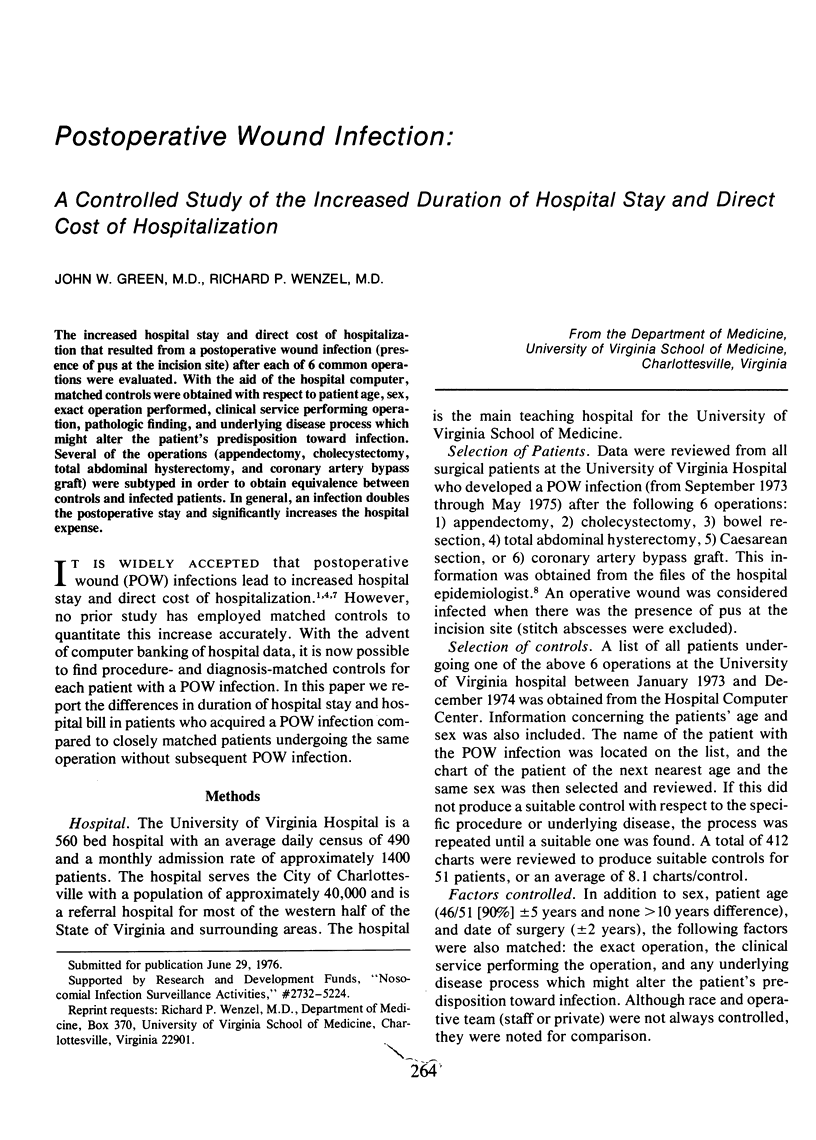
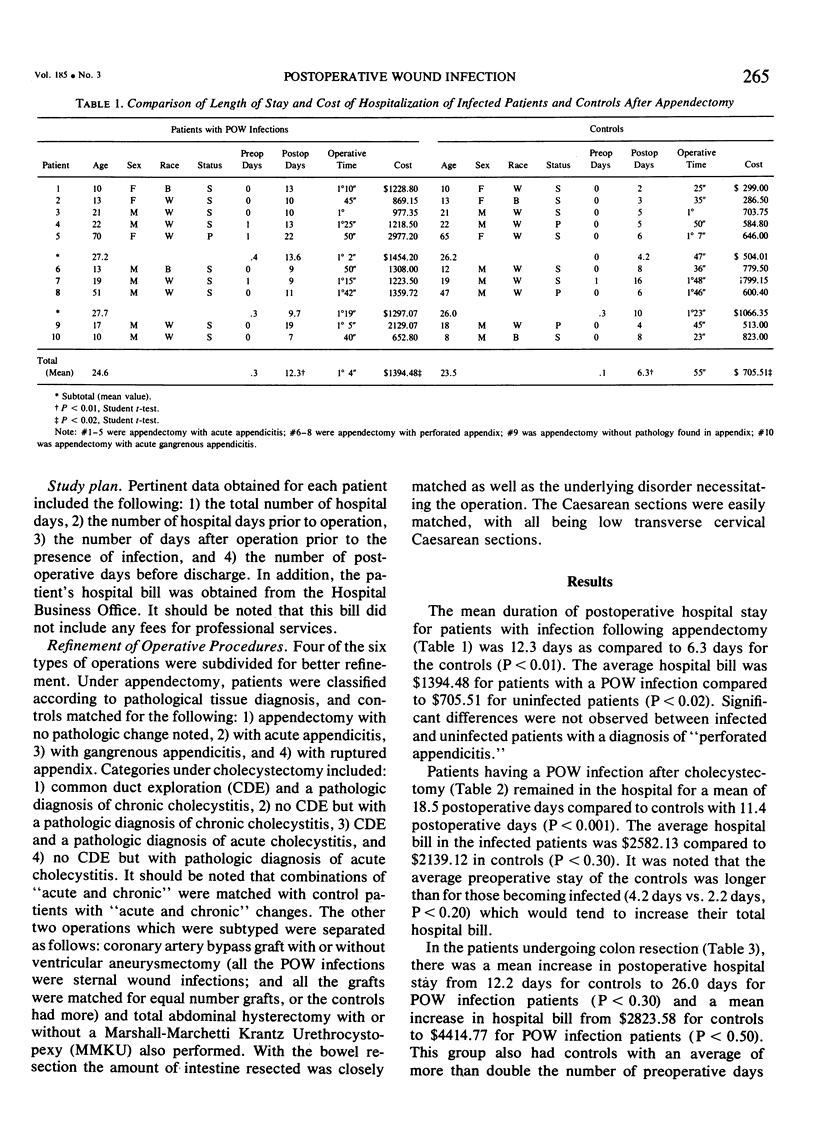
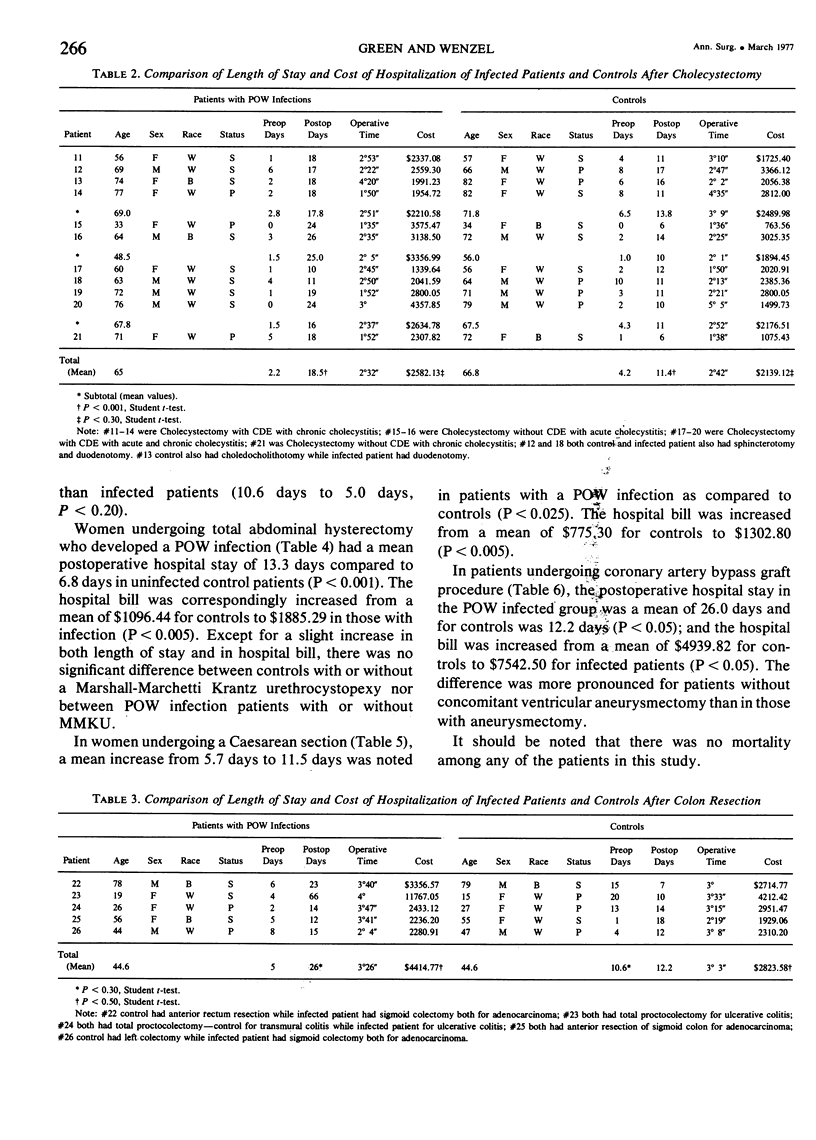
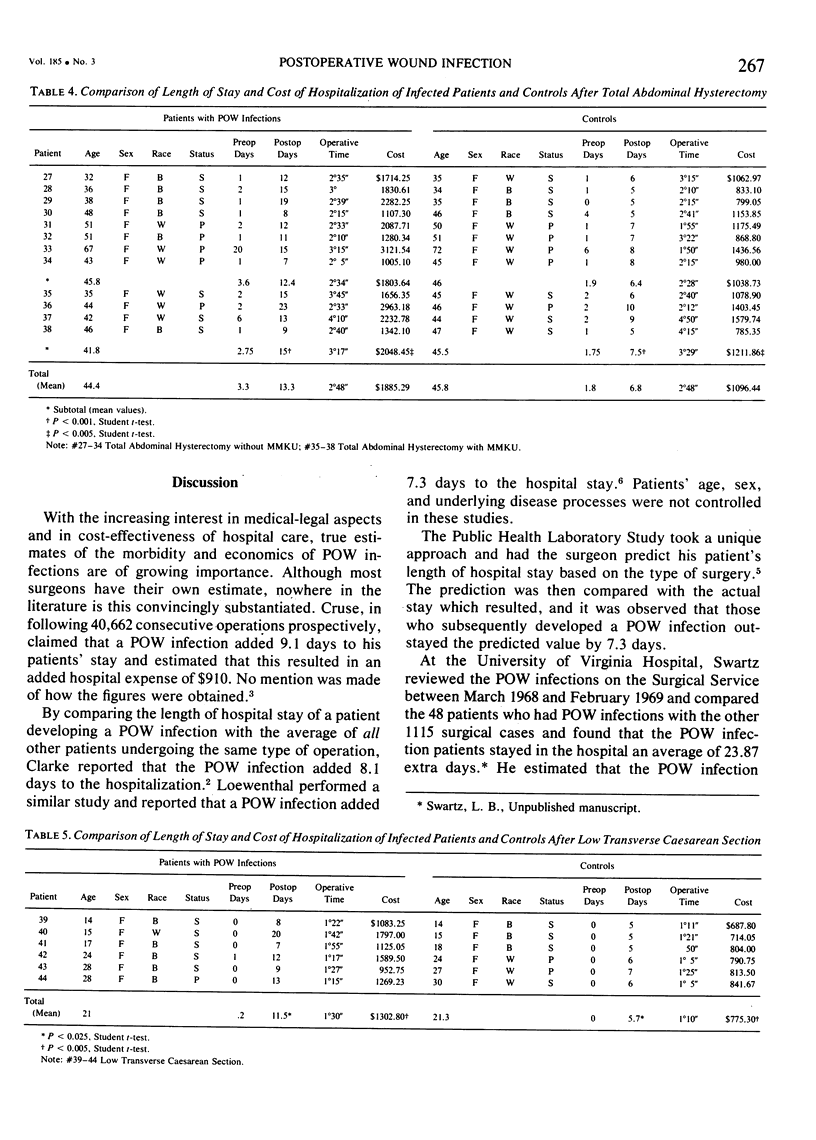
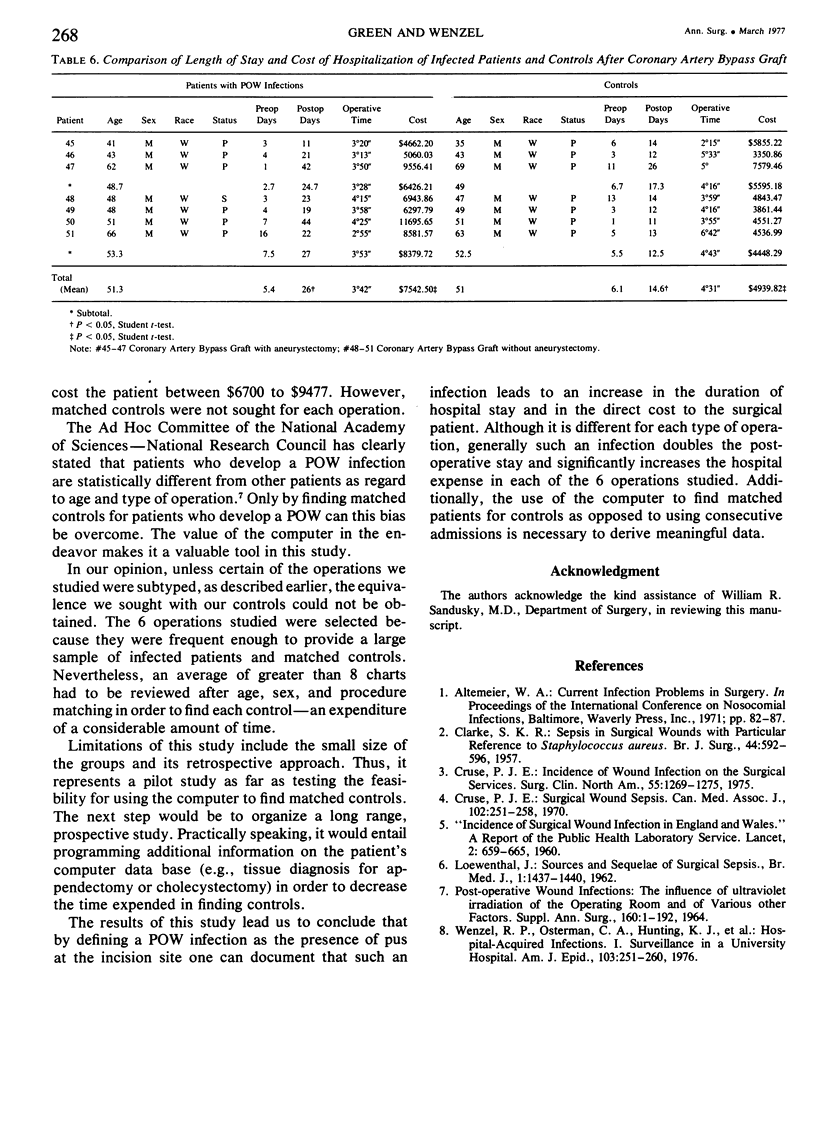
Selected References
These references are in PubMed. This may not be the complete list of references from this article.
- CLARKE S. K. Sepsis in surgical wounds with particular reference to staphylococcus aureus. Br J Surg. 1957 May;44(188):592–596. doi: 10.1002/bjs.18004418809. [DOI] [PubMed] [Google Scholar]
- Cruse P. J. Incidence of wound infection on the surgical services. Surg Clin North Am. 1975 Dec;55(6):1269–1275. doi: 10.1016/s0039-6109(16)40780-2. [DOI] [PubMed] [Google Scholar]
- Cruse P. J. Surgical wound sepsis. Can Med Assoc J. 1970 Feb 14;102(3):251–258. [PMC free article] [PubMed] [Google Scholar]
- LOEWENTHAL J. Sources and sequelae of surgical sepsis. Br Med J. 1962 May 26;1(5290):1437–1440. doi: 10.1136/bmj.1.5290.1437. [DOI] [PMC free article] [PubMed] [Google Scholar]
- Wenzel R. P., Osterman C. A., Hunting K. J., Gwaltney J. M., Jr Hospital-acquired infections. I. Surveillance in a university hospital. Am J Epidemiol. 1976 Mar;103(3):251–260. doi: 10.1093/oxfordjournals.aje.a112223. [DOI] [PubMed] [Google Scholar]


